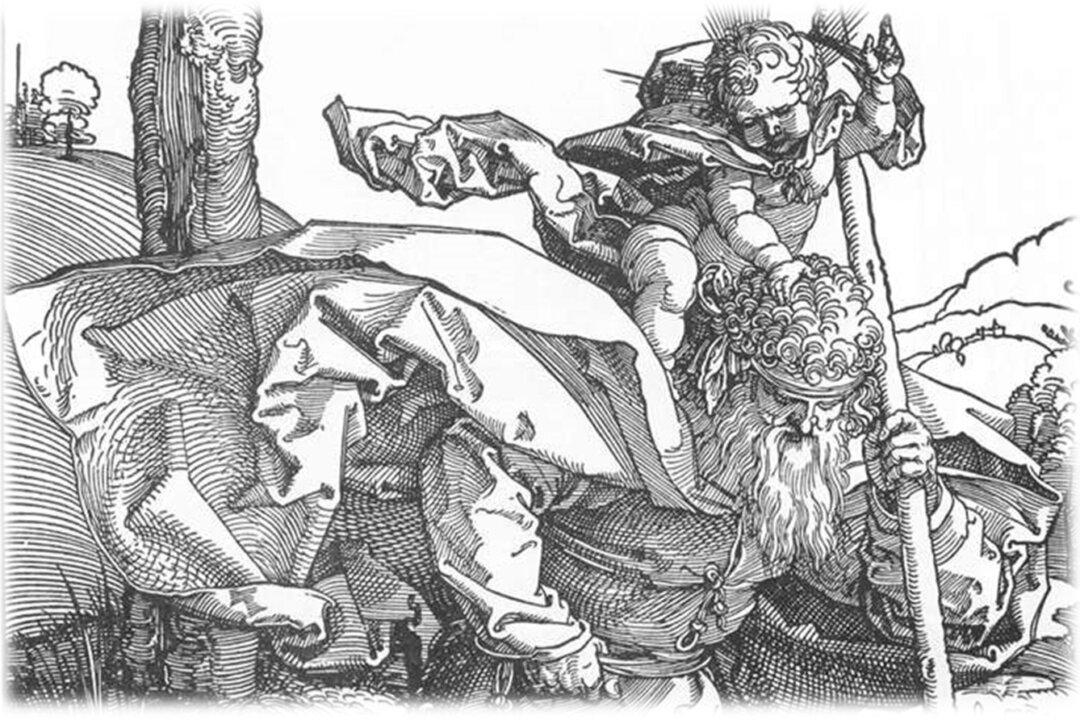There are many ways that divine beings manifest themselves to believers. Artists have depicted these amazing events in their art, and Albrecht Dürer did so in the fabulous woodcut “St. Christopher Carrying the Infant Christ” (1511).
Since the sixth century, St. Christopher has been a popular religious figure as the protector of travelers. There are several legends about the saint. Dürer’s version presents the story that Christopher was a giant of a man with great physical strength, and he dedicated himself to service. He crossed paths with a hermit who told him about Christianity, and Christopher converted. He asked the hermit, “How can I serve God?”






